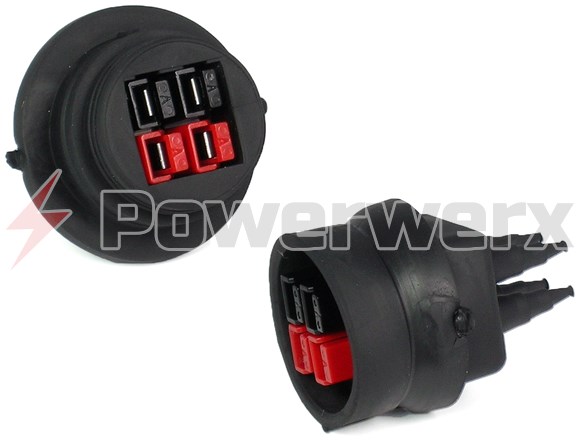I measured the actual short circuit voltage from the three 12 volt panels in series and it was 48 VDC with 10 gauge wire, and once the charge controller is hooked up, the charge controller steps it down to the charging voltage between 12 and 15. At the charge controller I will have about three feet of 6 gauge wire from the charge controller to the batteries.
I was originally thinking 6 panels in parallel, but I came up with thicker wire like 8 gauge. After putting them in series, I ran the panels longer and used 10 Gauge wire.
The MPPT charge controller I have is 100 volts 50 amps, so that means I can't exceed an input of 100 volts and 50 amps, and it will step it down to a 12 Volt battery bank or a 24 volt battery bank, settable to my choice. As it steps it down though, it can't push to the batteries more than 50 amps. You could take all four of your panels run them in series into this charge controller to charge a 12 Volt battery bank and stay at 10 gauge wiring.
I've crimped a lot of things like pins and BNC cables, and found the MC4 Connectors harder. My other two crimping tools would not work on the MC4 cables.
Not sure Anderson Connectors are a good idea for a permanent setup. If I'm wrong, I'd like to know.
The MC4 cables have an IP67 rating, which is good waterproof wize. The Anderson Cables I picked up don't look like they would last out in the open long term, they just aren't sealed good. I may use Anderson plugs as my next upgrade for my trailer where I may tie in two or three ground panels, which would only be plugged in a few days, not yeats on end. The Anderson cables are easy to make and can be purchased in high enough amp ratings, I just don't know how they'd do outside year after year. It is supposed to be the go to thing for vehicles to plug in things like spotlights and other things with a quick disconnect.
Edit: I see you posted the splash proof Anderson Plugs. There's a difference between a "splash Proof" description and an IP67 rating
https://www.l-com.com/frequently-as...le-connectors-or-adapters-what-does-ip67-mean



